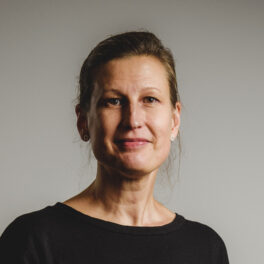The recent book Social Sustainability in Ageing Welfare States discusses social sustainability from different perspectives. In their book chapter, Paula Saikkonen and Paul Bridgen examine how sustainability can be understood and what it means for care services. They use the concept of integrated sustainability to emphasize that sustainability must be considered as a single entity.

For several decades, I have followed discussion on sustainability. More and more information is constantly being accumulated, and the research community has presented interesting ideas, of which sustainability science is one example. Nowadays, new students of social policy can already expect that the environmental perspective will be reflected in their studies. Information on what a sustainable society means is available. The bigger question seems to be how to bring about the necessary change.
Paul Bridgen and I ended up discussing the path dependence of welfare states, the permanence of different ways of thinking, or at least the very slow change at a conference a few years ago. We have both read about social policy in the time before Greta Thunberg, and since then we have thrown ourselves into the whirlpool of eco-social politics and found that traditional social policy and eco-social politics unfortunately go their own way – and researchers in their own conferences or working groups.
There is only one sustainability
In our book chapter, we look at how sustainability can be understood and what it would mean for care services. A sustainable welfare state means that the welfare state is available for future generations at least to the same extent as the current ones. The future generations should have the same opportunities for well-being as our generation has had. This also includes nature, because without drinkable water or clean air, there are hardly any prerequisites for well-being. Of course, nature itself also supports well-being. A sustainable welfare state does not mean that everything should sustain the same.
In the book chapter, we use the concept of integrated sustainability to emphasize that sustainability must be considered as a single entity. You can’t talk about sustainability if you don’t consider the economic, social and ecological dimensions of sustainability at the same time. In a time of welfare states’ retrenchments, it would be foolish to talk about strengthening economic sustainability if at the same time ecological or social sustainability is weakened. In current decision-making, economic sustainability is often emphasised. In its name, cuts are made that reduce the availability of services, leave overburdened care workers unable to cope, and undermine citizens’ trust in receiving the support they need—ultimately eroding confidence in public institutions and policies.
With the concept of integrated sustainability, we emphasize that sustainability is not a zero-sum game. Ecological solutions can also strengthen other sustainability dimensions. For example, the digitalisation of services can reduce the carbon footprint, improve the accessibility of services or reduce loneliness, but only if they are planned smartly. Poorly implemented digitalisation of services can increase inequality and further marginalise vulnerable people.
How to strengthen sustainability?
Together with Paul, we pondered how two very different welfare states face the same phenomenon, i.e. an ageing population, at the same time as society should take significant leaps towards sustainability. Based on the research literature on eco-social policy, we created criteria for what sustainable old adults care would mean and reflected on the extent to which current systems are sustainable with these criteria. These six criteria can be found out by reading the book chapter.
We are not conducting comparative research, but we believe that two quite different countries and welfare states highlight interesting similarities, but also that each welfare state must find its own way to move forward in sustainability measures. Of course, it is always good to learn from the successes and mistakes of others.
It is hardly surprising that neither welfare state can claim that their care services are sustainable. Of course, both systems have features that have been thought to exist in sustainable welfare systems. Part of the reason may be found in the perspective we have chosen. We largely examined national-level policies, policy documents and statistics. They do not recognize local communities or grassroots actors, furthermore, there hasn’t been in-depth discussions about the services and service needs of the elderly with the target group itself.
I am quite sure that the concept we are using, integrated sustainability, is not necessary to achieve a sustainable welfare state. Sustainability must be talked about in such a way that it automatically includes all dimensions. An analytical distinction between dimensions can be made if necessary. The literature on eco-social policy provides good ideas of what a sustainable welfare state looks like. An understanding of traditional social policy is needed to make a controlled systemic change that keeps everyone on board. In a democratic society, change needs the support of the majority.
It is good if researchers can build bridges across disciplines and school disputes in order to solve social problems, but this alone is not enough. We need more public debate on sustainable well-being, it can help us find a positive vision of the future that will eventually make change possible, increase the pressure on political decision-making and broaden our understanding of what well-being means in a post-industrial welfare state.
Chapter
Bridgen, P. & Saikkonen, P. (2025). Integrated sustainability: what is it and what are its implications for social care in ageing welfare states? in: Vaalavuo, M. & Nelson, K. & Kuitto, K. (eds.) Social Sustainability in Ageing Welfare States. Edward Elgar Publishing. 229–249
About the book
Social Sustainability in Ageing Welfare States (eds. Vaalavuo, Nelson & Kuitto): Social Sustainability in Ageing Welfare States. This is an Open Access title.


